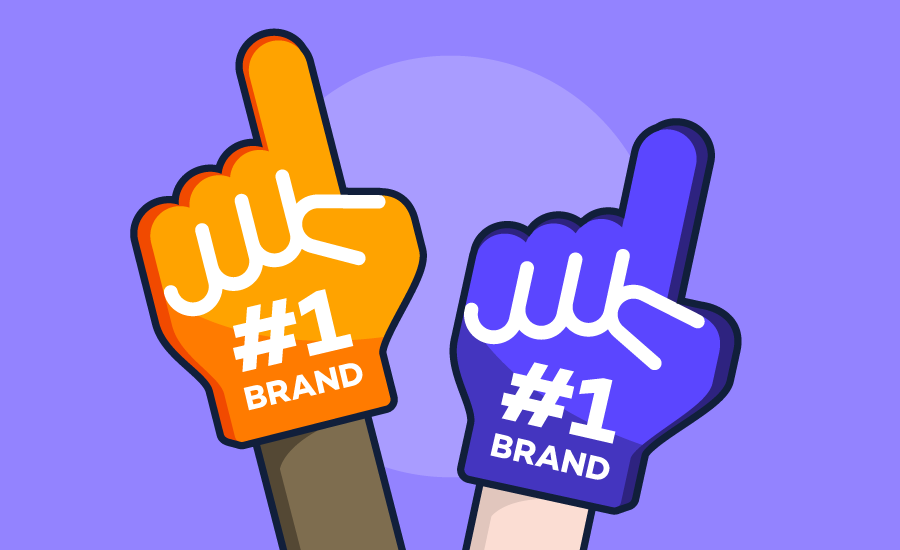In today’s hypercompetitive digital landscape, establishing a strong brand presence is essential for success. However, with countless businesses vying for attention online, standing out can be a daunting challenge. This is where Search Engine Optimization (SEO) becomes a pivotal tool in your arsenal. By harnessing the power of SEO, brands can amplify their visibility, reach their target audience more effectively, and ultimately solidify their position in the market.
In this comprehensive guide, we’ll explore the dynamic world of SEO strategies specifically tailored to enhance brand awareness. From understanding the foundational principles to implementing advanced tactics, we’ll equip you with the knowledge and insights needed to elevate your brand’s online visibility to new heights.
Whether you’re a seasoned marketer looking to refine your approach or a budding entrepreneur eager to make your mark, this blog is your roadmap to unlocking the full potential of SEO for brand awareness. Join us as we embark on a journey to maximize brand visibility and carve out a distinctive presence in the digital realm.
Understanding the Importance of SEO for Brand Awareness
SEO (Search Engine Optimization) plays a crucial role in building brand awareness in today’s digital landscape. Here’s why it’s so important:
Visibility and Rankings: SEO helps your brand to appear higher in search engine results pages (SERPs). When people search for relevant keywords related to your business, appearing at the top increases visibility and the likelihood of users clicking through to your website. High rankings build trust and credibility for your brand.
Increased Website Traffic: By optimizing your website for search engines, you’re essentially making it easier for users to find you. As a result, you’ll experience a boost in organic traffic to your site, as opposed to relying solely on paid advertising or other channels. This steady stream of traffic exposes more people to your brand.
Targeted Audience Reach: SEO allows you to target specific demographics, locations, and interests. By optimizing your content with relevant keywords and phrases, you’re more likely to attract users who are actively seeking the products or services you offer. This targeted approach ensures that your brand is reaching the right audience at the right time.
Brand Credibility and Trust: Brands that appear at the top of search results are often perceived as more credible and trustworthy by users. Through effective SEO strategies such as creating high-quality content, building backlinks from reputable sites, and optimizing for user experience, you can establish your brand as an authority in your industry.
Long-term Investment: Unlike paid advertising, which stops generating traffic once you stop paying, the benefits of SEO are long-lasting. By consistently optimizing your website and creating valuable content, you can maintain high rankings in search results over time, leading to sustained brand awareness and visibility.
Competitive Advantage: In today’s competitive marketplace, having a strong online presence is essential for staying ahead of the competition. Investing in SEO allows you to outperform competitors in search rankings, ensuring that your brand remains visible and relevant to potential customers.
Cost-effectiveness: While SEO requires an initial investment of time and resources, the long-term benefits far outweigh the costs. Compared to paid advertising, which can be expensive and may not always deliver sustainable results, SEO offers a more cost-effective way to increase brand awareness and drive organic traffic to your website.
SEO is an integral part of any brand’s marketing strategy in the digital age. By improving visibility, increasing website traffic, targeting the right audience, and establishing credibility, SEO plays a fundamental role in building brand awareness and driving business growth over the long term.
Setting Clear Brand Objectives in SEO

Understanding and defining brand objectives in SEO is foundational for effectively leveraging digital marketing efforts to support broader business goals. Begin by gaining a clear understanding of your overarching business objectives. Are you focused on increasing sales, driving website traffic, generating leads, or enhancing brand visibility? These goals will serve as the guiding force behind your SEO strategy.
Once you’ve established your business objectives, translate them into specific and measurable SEO goals. For example, if your aim is to boost sales, your SEO objectives might include improving keyword rankings for product-related searches, optimizing product pages for conversions, and increasing organic traffic to your online store.
Before diving into implementation, conduct a thorough audit of your website to identify areas for improvement. Evaluate factors such as site structure, page speed, mobile-friendliness, on-page optimization, content quality, and backlink profile. This audit will help you prioritize your SEO efforts and address any technical or content-related issues that may hinder your success.
Regularly review and refine your SEO objectives, tactics, and performance to ensure alignment with your broader brand goals. Stay abreast of changes in the search landscape, algorithm updates, and shifts in consumer behavior. Adapt your strategies accordingly to maintain a competitive edge and achieve sustained success in your digital marketing endeavors.
Monitoring and Analyzing SEO Performance Metrics

Monitoring and analyzing SEO performance metrics is crucial for evaluating the effectiveness of your optimization efforts and making data-driven decisions to improve your search visibility and overall digital marketing strategy.
Start by regularly tracking key performance indicators (KPIs) such as organic traffic, keyword rankings, click-through rates (CTR), conversion rates, and backlink profile. These metrics provide valuable insights into the health and performance of your website in search engine results pages (SERPs).
Organic traffic is a fundamental metric that indicates the volume of visitors coming to your site from organic (non-paid) search results. Monitoring changes in organic traffic over time helps you assess the impact of your SEO efforts on driving user engagement and website visits.
Keyword rankings reveal where your website pages rank in search results for specific search queries. Track your rankings for target keywords to identify opportunities for improvement and measure the effectiveness of your optimization strategies.
Click-through rates (CTR) measure the percentage of users who click on your website’s link in search results after seeing it. Analyzing CTR data helps you understand the effectiveness of your titles, meta descriptions, and search snippets in attracting clicks and driving organic traffic.
Conversion rates indicate the percentage of website visitors who complete a desired action, such as making a purchase, filling out a form, or subscribing to a newsletter. By tracking conversion rates, you can assess the quality of your traffic and the effectiveness of your website in converting visitors into customers or leads.
Evaluate the quality and quantity of backlinks pointing to your website from other sites. High-quality backlinks from authoritative sources can improve your site’s authority and credibility in the eyes of search engines, potentially leading to higher rankings and increased organic traffic.
In addition to these primary metrics, consider other relevant performance indicators such as bounce rate, average session duration, pages per session, and dwell time. These metrics provide insights into user engagement, website usability, and content effectiveness.
Use web analytics tools such as Google Analytics, Google Search Console, and third-party SEO platforms to track and analyze your SEO performance metrics. Set up custom reports and dashboards to monitor trends, identify anomalies, and measure the impact of your optimization efforts over time.
Regularly review and analyze your SEO performance data to identify areas for improvement, capitalize on opportunities, and optimize your digital marketing strategy accordingly. By continuously monitoring and analyzing key metrics, you can make informed decisions to enhance your website’s search visibility, drive organic traffic, and achieve your business goals.
Adapting SEO Strategies to Evolving Algorithms and Trends

Adapting SEO strategies to evolving algorithms and trends is essential for maintaining and improving your website’s search visibility and performance. Search engines like Google frequently update their algorithms to deliver more relevant and valuable results to users, while consumer behaviors and technology trends also evolve over time. To stay ahead of the curve, it’s important to monitor changes in the SEO landscape and adjust your strategies accordingly.
First and foremost, stay informed about updates to search engine algorithms and guidelines. Google, for example, regularly announces major algorithm updates and provides guidance on best practices for optimizing websites. Keep an eye on industry publications, SEO blogs, and official announcements from search engines to stay abreast of changes that may impact your SEO efforts.
Additionally, monitor trends in user behavior, technology, and industry developments that may influence search engine rankings. For example, the rise of mobile usage has led to increased importance placed on mobile-friendly websites and mobile-first indexing by search engines. Likewise, changes in consumer preferences, such as the growing popularity of voice search, may require adjustments to your keyword targeting and content optimization strategies.
Continuously analyze your website’s performance metrics to identify areas for improvement and opportunities for optimization. Pay attention to changes in organic traffic, keyword rankings, click-through rates, conversion rates, and other relevant metrics. Look for patterns or anomalies that may indicate the need for adjustments to your SEO strategies.
Regularly audit your website to ensure that it complies with current SEO best practices and guidelines. Evaluate factors such as site structure, page speed, mobile-friendliness, on-page optimization, content quality, and backlink profile. Address any technical issues, content gaps, or optimization opportunities that may arise from algorithm updates or shifts in search engine ranking factors.
Experiment with new SEO tactics and techniques to adapt to changing algorithms and trends. Test different approaches to keyword targeting, content creation, link building, and on-page optimization to see what works best for your website and audience. Stay agile and willing to iterate on your strategies based on performance data and feedback from users.
Finally, focus on providing value to your audience through high-quality content and a positive user experience. Ultimately, search engines aim to deliver the most relevant and useful results to their users, so prioritizing the needs and preferences of your audience will help ensure long-term success in SEO, regardless of algorithm changes or trends.
Incorporating Visual and Multimedia Content for Enhanced Visibility

Incorporating visual and multimedia content is paramount for enhancing visibility in today’s digital landscape. With the rise of social media, video platforms, and visually-driven search engines, users increasingly expect rich and engaging content experiences. To capitalize on this trend, businesses must integrate visual and multimedia elements into their online presence to stand out and capture audience attention.
One effective way to enhance visibility is through the creation of visually appealing and shareable content. Images, infographics, videos, and interactive multimedia not only attract attention but also encourage users to engage with and share your content across various platforms. Visual content is inherently more engaging and memorable than text alone, making it a powerful tool for capturing and retaining audience interest.
Optimizing visual content for search engines is equally important for enhancing visibility. Ensure that images and multimedia assets are properly optimized with descriptive filenames, alt text, and relevant metadata to improve their discoverability in image search results. Additionally, consider incorporating targeted keywords and relevant hashtags into captions, descriptions, and titles to increase the likelihood of your content appearing in relevant searches.
Leveraging visual and multimedia content across multiple channels and platforms can also expand your reach and visibility. Share videos on YouTube, Instagram, and TikTok, post images and infographics on social media platforms like Facebook, Twitter, and Pinterest, and embed multimedia content into blog posts and web pages to reach a wider audience. Cross-promoting visual content across different channels and formats can amplify its visibility and impact.
Interactive multimedia experiences, such as quizzes, polls, and interactive infographics, can further enhance engagement and visibility. These interactive elements encourage users to actively participate and share their experiences, driving traffic and visibility through social sharing and word-of-mouth referrals. Additionally, interactive content often generates more backlinks and social signals, which can positively impact search engine rankings and visibility.
Incorporating visual and multimedia content into your digital marketing strategy requires careful planning and execution. Start by identifying your target audience and understanding their preferences and interests. Tailor your visual content to resonate with your audience and align with your brand identity and messaging. Invest in high-quality visuals and multimedia production to ensure a professional and polished appearance that reflects positively on your brand.
Regularly monitor and analyze the performance of your visual and multimedia content to identify what resonates most with your audience and adjust your strategy accordingly. Track metrics such as engagement rates, click-through rates, social shares, and conversions to measure the effectiveness of your visual content in enhancing visibility and driving desired outcomes. By consistently creating and optimizing visual and multimedia content, you can increase your brand’s visibility and stand out in today’s competitive digital landscape.
Engaging with Your Audience to Foster Brand Loyalty and Advocacy

Engaging with your audience is key to fostering brand loyalty and advocacy in today’s competitive marketplace. By establishing meaningful connections and building relationships with your customers, you can cultivate a loyal fan base that not only continues to support your brand but also becomes advocates who spread the word and promote your products or services to others.
One effective way to engage with your audience is through social media platforms. Create a strong presence on platforms where your target audience spends their time, such as Facebook, Instagram, Twitter, LinkedIn, or TikTok. Share relevant and valuable content, interact with your followers, respond to comments and messages promptly, and participate in conversations to show that you value their input and feedback.
Incorporate user-generated content (UGC) into your social media strategy to further engage your audience and showcase their experiences with your brand. Encourage customers to share photos, reviews, testimonials, and stories related to your products or services. Repost and acknowledge UGC to demonstrate appreciation for your customers’ contributions and foster a sense of community around your brand.
Engage with your audience through email marketing by sending personalized and targeted messages that provide value and address their needs and interests. Use segmentation and automation tools to deliver relevant content, promotions, and recommendations based on customer preferences, behaviors, and demographics. Encourage feedback and interaction by including polls, surveys, and calls-to-action in your emails.
Host virtual events, webinars, or live streams to connect with your audience in real-time and provide opportunities for interaction and engagement. Invite guest speakers, conduct Q&A sessions, and encourage participation through polls, comments, and chat features. Virtual events allow you to showcase your expertise, build trust, and foster a sense of community among your audience members.
Create and maintain a blog or content hub where you can share informative, educational, and entertaining content that resonates with your audience. Address common questions, provide helpful tips and advice, and share behind-the-scenes stories and insights about your brand. Encourage comments, shares, and discussions to foster engagement and build a loyal readership.
Actively listen to your audience and seek feedback to better understand their needs, preferences, and pain points. Monitor social media conversations, reviews, and comments to identify trends, address concerns, and gather insights for improving your products, services, and customer experience. Show appreciation for feedback and demonstrate that you value customer input by implementing suggestions and making improvements based on their input.
Reward and recognize loyal customers and brand advocates to incentivize continued engagement and advocacy. Offer exclusive discounts, perks, or rewards programs for repeat purchases, referrals, or social media shares. Highlight and showcase customer success stories, testimonials, and reviews to publicly acknowledge and celebrate loyal customers and brand advocates.
By consistently engaging with your audience across multiple channels and touchpoints, you can foster stronger connections, build trust, and cultivate brand loyalty and advocacy. Prioritize authenticity, transparency, and empathy in your interactions to create meaningful and lasting relationships with your customers.



